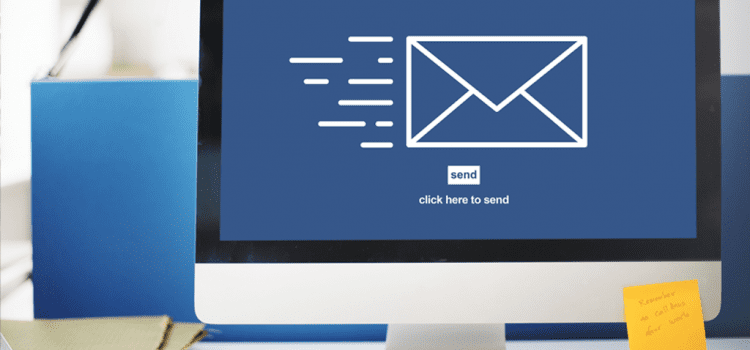Email marketing can be an effective strategy for not just gaining new work and clients, but for keeping in touch with existing clients too. Reminding them of your skills and informing them about new services or offers can be a great way to get further work.
However, it’s only effective it it’s used wisely. Here are our tips for ensuring that your emails are effective marketing tools (and not just destined for the deleted items folder).
DO:
Consider Your Target Audience
Who should you be emailing and what are they likely to want or need from you? You need to consider all kinds of client and think about how to match your services to their requirements. Who needs the services you offer?
Customise Your Emails for Their Recipients
There are times when a one-size-fits-all email will do and other times when you should customise your emails carefully for their recipients. Consider:
- the tone you use
- the status and wealth of the company (which could affect the prices and packages you offer)
- the services that these particular clients might require and your relevant experience. For instance, I write in several fields including healthcare. But if I’m selling my services to a business or history magazine or website, they’re unlikely to care about my work with health care professionals, companies, charities and auditors – nor will they want to hear about my NHS career, monthly health column and Pharmaceutical Science qualifications.
This doesn’t always mean sending an individual email to each address on your list; you may still be able to group clients and send out an email tailored to that client subset.
Create Squeeze/Landing Pages on your Website
A link to your site’s homepage isn’t enough. If someone has clicked on a link in your email for a service or offer, they should be taken to a specific page that focuses on that service or offer specifically and gives more details – a ‘landing page.’
These pages should be designed to entice a client into taking action – and you should make it easy for them to do so. One way to make landing pages even more enticing may be to add a video. You don’t have to be in it if you’re not happy in front of the camera! But eyeviewdigital.com claim that using video on landing pages can increase conversion by 80%.
Add a sign-up form and your landing pages become squeeze pages.
Offer Incentives and Rewards
What kind of incentives and rewards you offer will depend very much on the industry in which you’re working. But try to be creative. Think about discounts, packages and rewards you can offer without suffering too much of a loss. Don’t offer something for nothing unless it’s a time-limited introductory tempter – reward loyalty, repeat and bulk work and referrals with discount and special offers.
Highlight Any New Services You Offer
Perhaps you’ve started working with a partner to offer a core complete portfolio of services – or services that complement yours. Maybe you have a new skill, qualification or service of your own. Don’t hide these talents away – make sure they’re the subject of an email.
For instance, if a previous client loved your content writing but now wants a complete brochure produced with text and graphics, they may not think of you because they know you purely as a writer. But if you’re now confident or qualified in graphic design (or have teamed up with somebody else who is), you could be their perfect choice – if they knew you could now offer them what they needed!
Thank People Who Respond or Sign Up for Emails
A short, polite welcome email to thank people who subscribe to your mailing list is a nice touch. If you don’t have a mailing list, or a potential or existing client responds to an individual email without signing up, put a thank you in their reply. A little courtesy can go a long way.
Reply Swiftly to Responses
It’s professional, it’s polite and it’s a good indicator of your attitude to your business. Also, if the project they have in mind is urgent, you could lose the work to someone else if you’re slow to reply.
DON’T
Send Marketing Emails to Individuals Who Haven’t Contacted You Before/Requested Contact
It’s fine to send marketing emails to companies – and to individuals you’ve worked with, or negotiated to work with, before (although you must always give them the option of opting out of further emails). But you mustn’t contact individuals by email to sell your services in any other circumstances it’s against the law. You can visit the Information Commissioner’s Office website to find about more about the law on direct marketing campaigns and email marketing.
Bombard Clients with Multiple Emails
This will not encourage them to hire you. It’s far more likely to place you on their blacklist.
Ignore Requests to Unsubscribe
Make sure your email recipients always have the option to say no to any more emails from you – and honour that request swiftly by immediately removing them from your mailing list.
Reveal Other Clients Contact Details
If you’re not using an email subscription service like MailChimp, then ensure that you use mail groups or BCC on your emails so that recipients can’t see anyone else’s email addresses.
Remember, sending multiple and spam emails isn’t just discourteous and bad practice – it could also lead to ISPs (internet service providers) blacklisting your email address and domain.
Analyse the success of your emails by looking at subscriptions, unsubs, click-throughs etc. use that data and any feedback from clients to tailor your emails more closely to what they want. Never overwhelm existing or potential clients with irrelevant, repetitive and overly-frequent emails. You will be alienating them and wasting your chance to use a powerful marketing tool!







